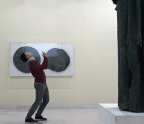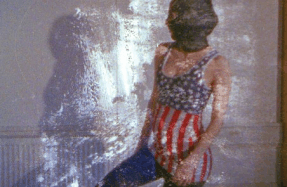
Artists who write clearly about their work run a serious risk: that they will be taken at their word. In much of contemporary art this dynamic has descended to the point that the work, the sensuous object, functions as little more than an illustration of the artist’s statement, a vestigial offering to the market. Anxiety over the uncertain presence of an audience demands that whoever arrives in the role of beholder must not walk away without the supposed satisfaction of knowing precisely what they have encountered.
I begin here for two reasons. The first is that the Armenian filmmaker Artavazd Pelechian is the author of one of the great autotheoretical texts, “Montage-at-a-Distance, or: A Theory of Distance” (my quotes from the piece throughout this essay will draw from Julia Vassilieva’s 2015 translation, published in the journal Lola under that title; its first half has also been translated as “Distance Montage” and “Contrapuntal Montage”). The second is that, after a 27-year absence, Pelechian has returned with a new film, La Nature, installed at Paris’ Fondation Cartier, a venue at the heart of France’s contemporary art scene.
A pre-emptive correction may be in order. For the trouble with Pelechian isn’t that his words have been taken to provide too clear a meaning, but rather that they have offered cover, within a body of criticism miniscule in relation to Pelechian’s achievement, for avoiding the difficult issue of dealing with the meaning of his work at all. “It is almost impossible to express in words the content of such films. They exist only on screen; one must see them.” So we are told by Christoph Settele, writing in 1993 in the Swiss journal Cinema, that he is “a master of the ambivalence of expression,” and by Constantin Wulff, in a catalogue essay accompanying Pelechian’s 2004 exhibition at the Kunsthalle Wien, that his films are “masterpieces of ambivalence.” In his essay on the filmmaker for Senses of Cinema, by far the most substantial English-language account of Pelechian’s career, Daniel Fairfax does extensive work to contextualize and clarify Pelechian’s thought, as well as to illuminate the mechanics of distance montage, but arrives at a typical conclusion when, in his discussion of We (1969, the film is at times referred to in English as Us), he notes that a recurring image which was initially “indiscernible” is in the end “now given meaning,” without offering any indication what its meaning, or meanings, might be.
This reticence is understandable, even respectable. Understandable because the way in which Pelechian’s montage conveys the “coherence of [his] worldview” presents a serious challenge to language, a topic that we will return to toward the end of this piece. Respectable because it conveys a sensitivity to the fact that the openness of aesthetic experience which their form affords is what marks this small but potent oeuvre, ten films






